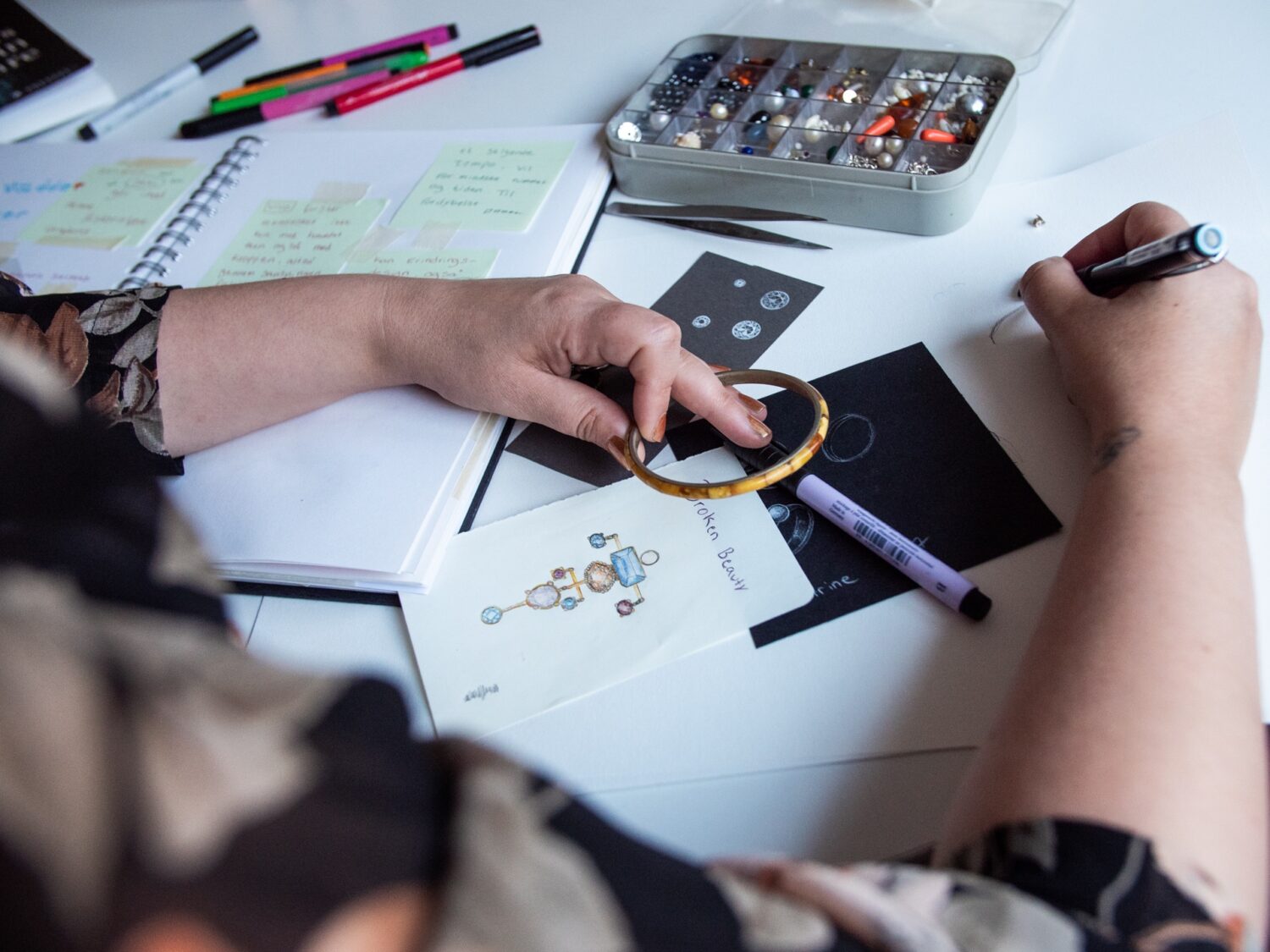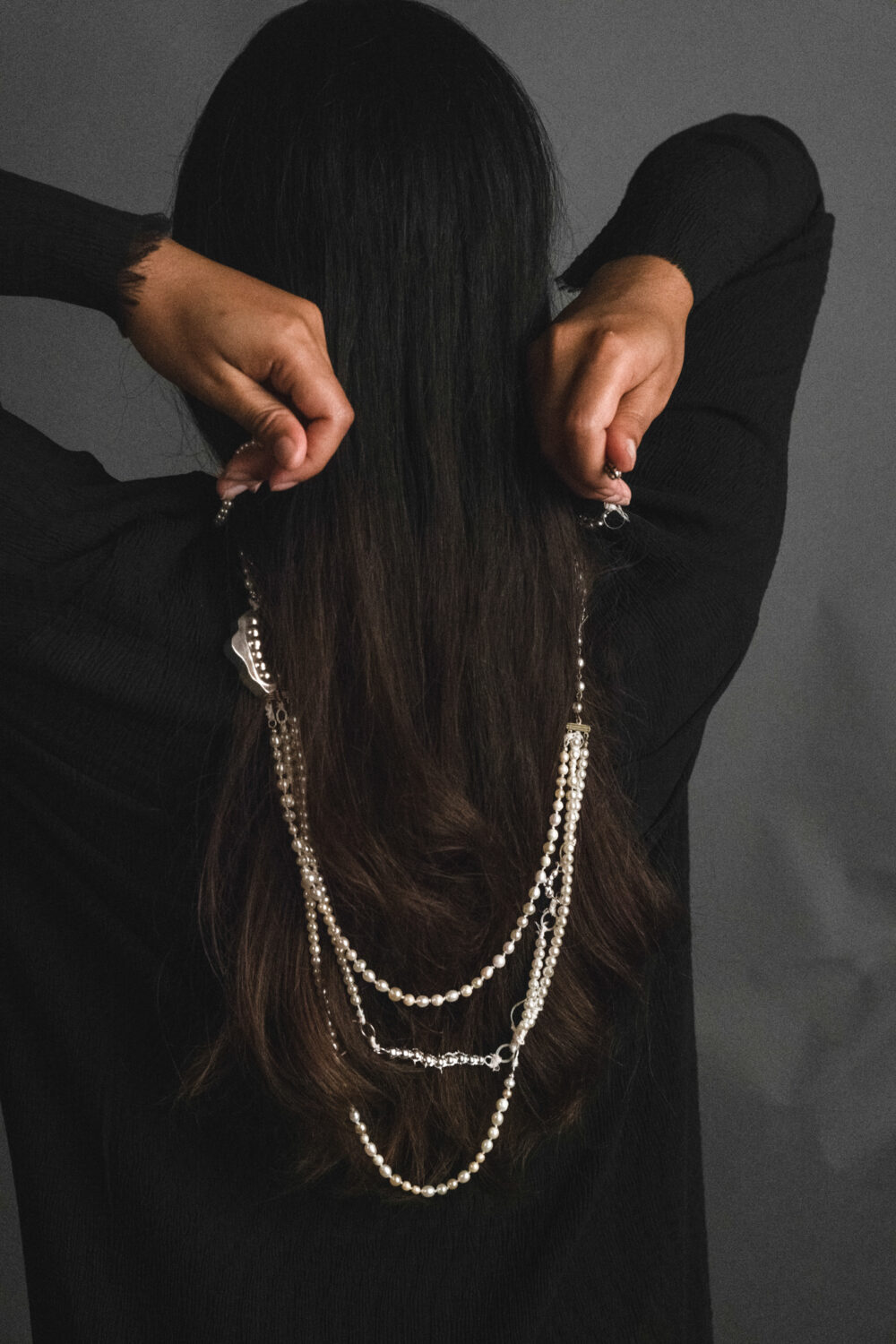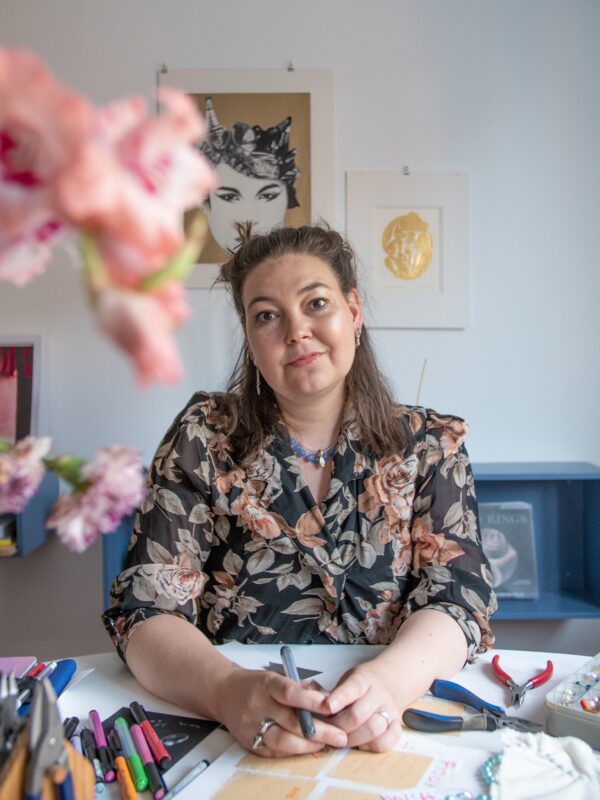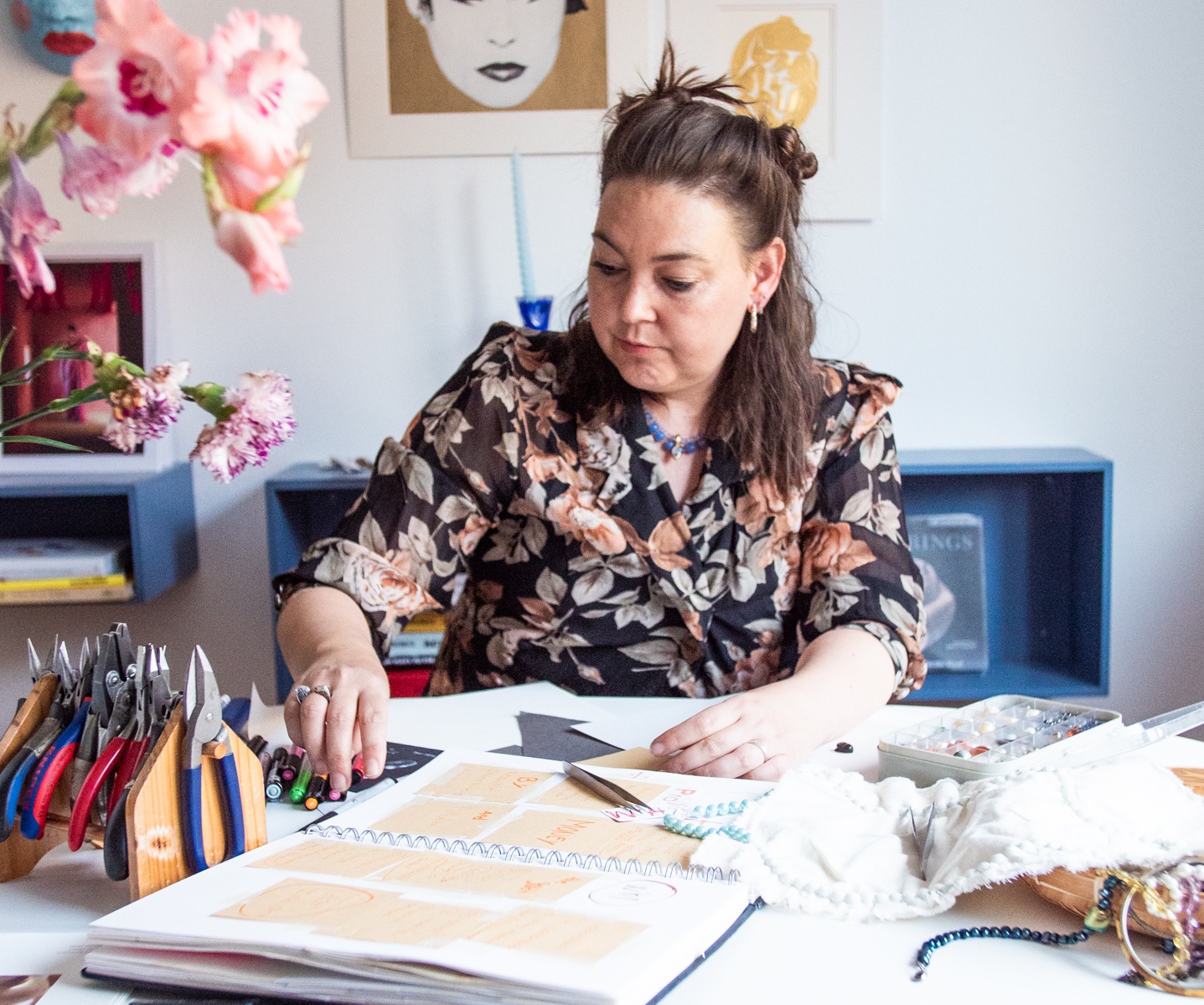‘In the couture and luxury segment, we don’t overproduce. However, there’s still a long way to go for a sustainable transition in the jewellery industry.’
This is shared by designer and goldsmith specializing in sustainability, Katrine Ingrid Christensen, from her apartment in Pforzheim, Germany. A city that historically has been the center for some of Europe’s finest jewellery production, but which has diminished over the years.
Here, she works as a master goldsmith in the development department for Les Ateliers Bijous Gmbh, which produces couture jewellery for one of the largest luxury brands in the world.
She sees a really large potential for sustainability in the jewellery industry, which is slowly beginning to manifest itself, especially within the luxury segment.

More recycling
‘There is a lot of focus on sustainability in the jewellery industry, and it’s not just about materials anymore, but also quantities and waste. However, the progress is slow,‘ says Kathrine Ingrid Christensen.
There’s still a lot of work ahead before the jewellery industry becomes sustainable in a holistic, all-encompassing sense, she believes.
‘In many ways, we resemble the fashion industry with our trend-chasing, but unlike the fashion industry, we in the jewellery sector have always recycled, like melting metal down for instance. We need to continue doing that. But I feel we need to get better at looking at the entire spectrum: from where we source our materials and under what conditions, to how we can disassemble products,’ she says and continues:
‘In my daily work, I can see how far we could go if we got better at handling our waste when we develop new designs. For instance, if we started recycling finished samples, meaning taking them apart instead of just melting them down, which of course requires resources. I see a lot of potential in that.’

Extended Lifespan
The idea of recycling is inherent in Katrine Ingrid Christensen’s understanding of sustainability. Her graduation collection from Designskolen Kolding, where she completed her Master’s degree in Design for Planet in 2021, was constructed around a series of recycled finds from thrift shops in Kolding.
Old jewellery on the verge of being discarded after a long life, which she variously processed in her project “Traces”.
In the collection, the pieces were disassembled, reinforced, replicated. The life of the jewellery, the wear and tear that many take for granted, but which for Katrine Ingrid Christensen are emotional highlights, were emphasized. It was a celebration of use over consumption, one might say.
‘My thought was: How do we use the materials that are already here? And this is where the idea of ‘traces’ emerged. When we use old materials, there are traces from life, where they might have broken, or where there was once a clasp. The old marks. They are the window into the new. It is by emphasizing these traces that we can foster a conversation about how we use our materials. It’s about sustainability, in short,‘ she says.

Inspired by Conservation Principles
With this starting point, she developed a method for herself, inspired by the Cultural Agency’s Conservation Principles for the analysis and assessment of ancient monuments and buildings from 2015.
The method was about stretching the material’s original form as long as possible before recycling it into something entirely different.
This approach becomes evident with a bag of beads, both loose beads and bead necklaces, which Katrine Ingrid Christensen found in a thrift shop and processed in various ways in her project. Some were repaired, others were completely redesigned. Others still were reconstructed in a different material, where the imperfections or traces were emphasized.
‘I could easily have taken the beads apart and used them in my own way. But it only shows that I know how to recycle, something the industry already knows how to do. The more you use the original product, the more sustainable it is. Of course, one shouldn’t destroy an old necklace to make a new one if it can be repaired. Some things don’t require much modification to be brought back to life, while others need a bit of help,’ she says.
Make a Difference Where Possible
When Katrine Ingrid Christensen produces new jewellery in her current job, sustainability enters on different parameters. It’s challenging to highlight personal stories or the recycling thought when she’s not creating under her own name, she says.
‘I’m hired to develop new products that are marketable, and here I don’t influence the story. However, I do have a significant influence on the production process, on how the product best transitions from my first prototype to being ready for mass production. My job is to optimize our development process. It’s very much about planning how little and how much material is needed, so we have as little waste material as possible,’ she states.
Her interdisciplinary background as both a goldsmith and a designer also benefits her in this context. She can quickly test the feasibility of her ideas, saving a lot of logistics and transportation for the company based on this.
‘I recently received an elongated oval shape, which the design office liked. Based on this, I’m to present my take on a collection of bracelets, necklaces, and rings. Here, my design background comes to the fore in exploring shape and variations. In the atelier, we fortunately have the opportunity to start working directly in metal pretty quickly, so we can test our ideas in practice. This practice is very beneficial when dealing with luxury,’ she says.
But even though it might be challenging to incorporate the principles Katrine Ingrid Christensen uses under her own name, she still finds there’s a lot of creative freedom in her work at the atelier.
‘Most of the time, we receive a flat drawing from the design office, which we have to bring to life based on a few principles. A flat drawing can be interpreted in a thousand different ways. In this way, I can still infuse some personality into the jewellery we develop,’ she says.
Bio
Born: 1985 in Jyllinge
Education:
Master’s in Design for Planet, Designskolen Kolding, 2021
Bachelor’s in Accessory Design, Designskolen Kolding, 2018
Goldsmith from Copenhagen Technical School, 2012
Katrine Ingrid Christensen presented Crown Princess Mary with a pearl necklace from her graduation collection during the Royal Run in Kolding in 2022.

Kathrine Ingrid Christensen. Photo Frederik Frølich Honoré
Theme: Contemporary Jewellery Art
Can Danish jewellery art reinvent itself when the artistic education has been shut down, and the field doesn’t have a dedicated professional museum in Denmark?
What traditions and stories does Danish jewellery art build upon? How does the industry relate to contemporary demands for sustainability and new consumption patterns? Does jewellery still have a place in a world of abundance, climate anxiety, and discontent?
All signs indicate that Danish jewelry art is finding its own way regardless. Formkraft focuses on Danish jewellery art with articles from August – September – October 2023.
Search the archive
The Formkraft archive holds a treasure trove of articles about our shared history of crafts and design. These articles tell the story of professional development and Danish cultural history from 1948 to the present. Search for various topics in the archive or browse through the journals on the Journal Shelf.
Universal design with artistic qualities by Anni Nørskov Mørch, freelance curator and writer
The Adorned Human by Mathilde Rude, journalist and valuation expert
Receive a newsletter
Sign up for Formkraft’s newsletter and receive information about new articles as well as tips on relevant conferences and books. Sign up here.


